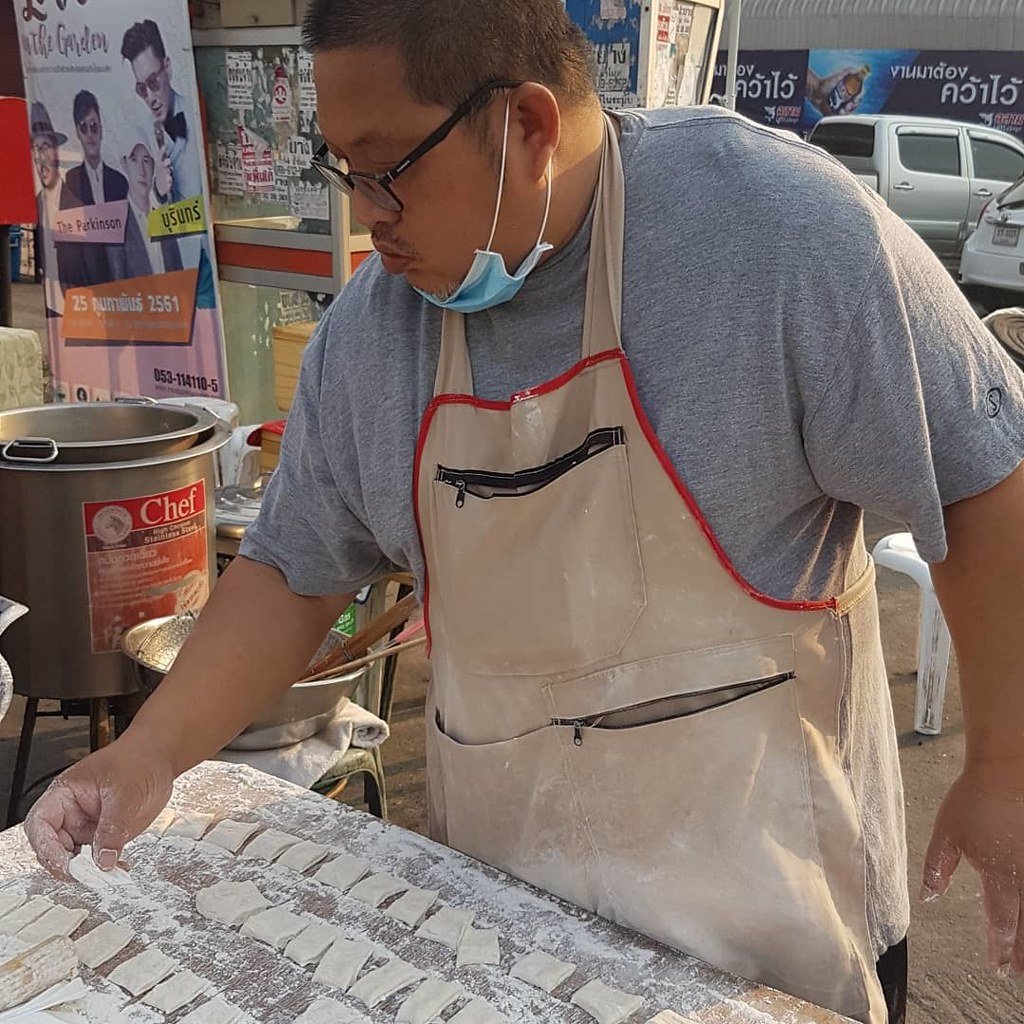My favourite place in Chiang Mai for the deep-fried dough that Thais call Patongko(ปาท่องโก๋)is the Mae Hia market.
When I think about the flawless Thai morning, it involves a stop at the market to get some hot fresh soy milk and a paper bag of these crispy, Patongko for the go.
Patongko is the Thai equivalent of the Chinese Youtiao. You will recognise vendors standing by large wok pans and stirring dough in oil. The secret of good taste lies in eating them hot; they shouldn’t be too oily and must have that airiness and fluffiness. They also taste good when you dip them in condensed sweet milk.
When I was a regular to Mae Hong Son, a vendor I knew added a pinch of peppermint to them that I loved. But on my recent return to Mae Hong Son, there was no sign of this old gentleman anymore.
Introduction of Patongko to Thailand
Chinese immigrants introduced fried dough sticks into Thailand in the 1920s. These fried crullers were called “cha-koi”, originating from Teochew and Hokkien dialects. Meanwhile, “Pa Tong Go” was used to characterise a Chinese sponge cake. These snacks were sold together, and locals probably mixed them up. After this, Thais went on to call the fried dough “Pa Tong Go”, but the other cake disappeared from the Thai-Chinese food scene.
The horrendous original tale of Patongko
The history of the shape of Patongko goes back to historical events in China. The two long fried sticks are Yue Fei’s story during the Southern Song Dynasty. Yue stood as one of China’s most admired heroes, a general whose patriotism was rooted in his youth. He was born in an impoverished and modest family.
When a young man, Yue saw the fall of the Northern Song Dynasty to the Jurchen invaders. As a general during the Southern Song Dynasty, he was determined to deter the Jurchens from expanding into the south and undertook offensives to reclaim the former Northern Song country.
The soldiers who combated under Yue highly honoured him. But he was betrayed and, in the end, executed as a result of treason from a traitor with the name 秦檜 Chin Hui.
When news of the betrayal reached the ordinary people, they were saddened and furious. To convey their anger and grief, a hawker in Hangzhou city put two dough sticks together and fried them in boiling oil.
He named his creation the char Hui 油炸檜, meaning “oil-fried Hui”. The two dough sticks exemplify betrayer Chin Hui 秦檜 and his wife 秦王氏. So everyone could have a bite of the traitors.
Imagine that next time you eat
Patongko. That you are eating two traitors fried in oil!!

In Chiang Mai, the Ton Keng shop sells them in various shapes of animals. That is if you want to try a dough stick dinosaur.
